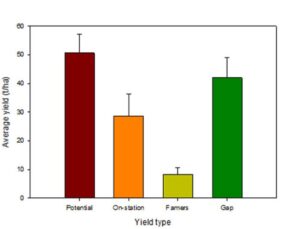
Top 20 Passive Income Ideas for Young Adults
Want to earn money while you sleep? Passive income is a great way to boost your financial security with minimal ongoing effort. As a young adult,
| Year | Initial Deposit | Monthly Contribution | Interest | Total Savings |
|---|
Compound interest is a concept in finance where interest is calculated on the initial principal as well as on the accumulated interest from previous periods. In other words, it’s interest calculated on both the initial amount of money (the principal) and on the accumulated interest from previous periods.
Here’s how compound interest works:
Initial Investment: You start with an initial amount of money, called the principal.
Interest Rate: You invest the principal amount at a certain annual interest rate.
Compounding Periods: The interest is compounded over specific periods, which could be annually, semi-annually, quarterly, monthly, or even daily. At the end of each compounding period, the interest is calculated and added to the principal.
Accumulation: Over time, the interest accumulates, and the principal grows larger because interest is earned on both the initial principal and the previously accumulated interest.
Continuous Growth: With compound interest, the amount of interest earned in each period increases because the principal grows larger, leading to exponential growth in the investment over time.
Compound interest is commonly used in various financial instruments such as savings accounts, certificates of deposit (CDs), bonds, loans, and investments. It allows investors to earn interest not just on their initial investment but also on the interest they’ve already earned, resulting in faster growth of their money over time.
Calculating your savings involves determining the amount of money you have accumulated or set aside over a certain period. Here are the basic steps to calculate your savings:
Determine Your Income and Expenses: Calculate your total income from all sources and your total expenses, including necessities like rent or mortgage, utilities, groceries, transportation, and discretionary spending.
Calculate Your Savings Rate: Your savings rate is the percentage of your income that you save rather than spend. It’s calculated as follows:
Savings Rate=(Total SavingsTotal Income)×100%Savings Rate=(Total IncomeTotal Savings)×100%
Track Your Savings Over Time: Keep a record of how much money you save each month or year. You can do this by maintaining a savings account or using budgeting tools or apps that track your expenses and savings.
Calculate Your Total Savings: Add up all the money you have saved or set aside in various accounts or investments. This includes money in savings accounts, retirement accounts (like 401(k)s or IRAs), investment accounts, and any other savings vehicles.
Evaluate Your Savings Goals: Determine whether your current savings align with your financial goals. If you’re saving for specific goals, such as buying a house, funding education, or retirement, compare your savings progress to your target savings amount.
Adjust Your Savings Strategy: If necessary, adjust your savings habits and investment strategy to reach your financial goals more effectively. This may involve increasing your savings rate, finding ways to reduce expenses, or exploring different investment options to maximize your returns.
Monitor and Review Regularly: Regularly review your savings and financial goals to ensure you’re on track. Make adjustments as needed based on changes in your income, expenses, or financial priorities.
By following these steps and regularly monitoring your savings, you can effectively manage your finances and work toward achieving your long-term financial goals.

Want to earn money while you sleep? Passive income is a great way to boost your financial security with minimal ongoing effort. As a young adult,

When it comes to purchasing a vehicle, the decision to buy a new or used car is a significant one that affects your finances and

In the ever-shifting landscape of the stock market, understanding the ebb and flow of bull and bear markets is crucial for investors aiming to thrive.

Venturing into the world of investing can be both exciting and daunting for beginners. With a plethora of options and strategies available, it’s crucial to

In the ever-evolving landscape of investing, securing a reliable yield above 5% is a target many investors aim for. With the current financial climate indicating

Navigating the investment landscape requires both innovative and time-tested strategies to diversify and strengthen your portfolio. This article explores a variety of smart investment approaches,

Capitacritique.com is an independent, advertising-supported publisher and comparison service. We are compensated in exchange for placement of sponsored products and services, or by you clicking on certain links posted on our site. Therefore, this compensation may impact how, where and in what order products appear within listing categories, except where prohibited by law for our mortgage, home equity and other home lending products. Other factors, such as our own proprietary website rules and whether a product is offered in your area or at your self-selected credit score range, can also impact how and where products appear on this site. While we strive to provide a wide range of offers, Capitacritique does not include information about every financial or credit product or service.